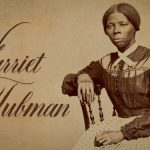Imagine a chaotic world without freedom, life-saving healthcare, and essential everyday devices. Our lives would be drastically different without the contributions of trailblazers from the past.
These remarkable individuals dared to dream big, paving the way for the conveniences and advancements we enjoy today. Their ideas revolutionized industries, reshaped societies, and expanded our understanding of the world.
1. Albert Einstein revolutionized physics and our understanding of the universe
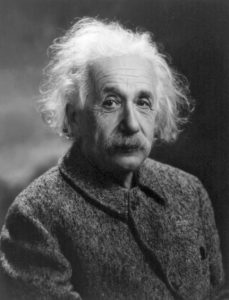
Albert Einstein, a name synonymous with genius, changed how we see the universe big time. His Theory of Relativity shook up what we knew about time, space, and gravity..
Back in 1905, Einstein became a big deal in the science world. It was his crazy productive year, known as his annus mirabilis.
Even though he was grinding away at the Swiss patent office in Bern, working eight hours a day, six days a week, he still managed to crank out four papers that flipped physics on its head.
In March of that year, he made a bold claim: light, which folks thought was just a wave, is actually made up of tiny bits called photons. This idea was a big deal and set the stage for quantum mechanics.
Then, just two months later, in May, Einstein’s math laid out some predictions about atoms that could be tested. Those predictions turned out to be right, confirming that all matter is made up of atoms.
Then, in September 1905, Einstein came up with a result of special relativity, the equation E=mc^2, which became super famous.
His well-known formula, E=mc^2, became a big deal in modern physics. It explains how energy and mass are connected and has had a big impact on lots of things outside of science, like philosophy and other subjects.
Einstein’s work isn’t just about fancy theories. It’s practical too. Things like GPS and bits of quantum theory that help make modern computers wouldn’t be possible without him.
2. Rosa Parks ignited the Civil Rights Movement with a single act of defiance
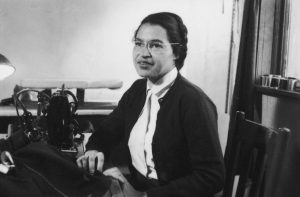
Rosa Parks, often called “the mother of the civil rights movement,” sparked a big push for fairness when she said no to giving up her bus seat to a white person in Montgomery, Alabama.
This happened on December 1, 1955, and got Parks arrested. Around 17,000 black folks in Montgomery joined in what’s known as the Montgomery Bus Boycott. The city had to change its bus rules after a Supreme Court decision and losing lots of money over thirteen months.
Parks quickly got much attention, but her standing up was just part of a life full of speaking out. She’d broken bus rules many times before, even getting kicked off a bus once for standing up for what she believed in.
After the Montgomery Bus Boycott, Parks lost her job and got threats to her life. So, in 1957, she and her family moved to Detroit, Michigan.
Even then, she stayed active in the NAACP and worked for Congressman John Conyers from 1965 to 1988, helping homeless people find homes. The Rosa and Raymond Parks Institute Of Self-Development started in 1987 to give job training to black young people.
In 1999, Parks got the Congressional Gold Medal of Honor, the biggest award for a regular person in the United States. Also, every year, the Southern Christian Leadership Conference (SCLC) gives out the Rosa Parks Freedom Award.
3. Mahatma Gandhi pioneered nonviolent resistance, inspiring global movements
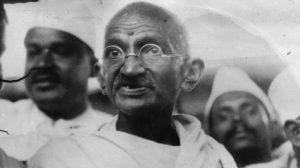
Mohandas Karamchand Gandhi is known as one of the greatest leaders of the twentieth century. In India, people call him the father of the nation. He believed in Satyagraha, which means resisting injustice with peaceful protests.
Gandhi led campaigns all over India to fight poverty, improve women’s rights, promote harmony between different religions and ethnic groups, and get rid of the unfair caste system.
He often went to jail for what he believed in, sometimes for many years. But in 1947, his efforts paid off, and India became independent from British rule.
He was often imprisoned for his actions, sometimes for years, but he accomplished his aim in 1947, when India gained its independence from Britain.
Gandhi’s peaceful protests also inspired similar movements around the world. People often call him Mahatma, which means “great soul” or “saint” in Sanskrit. He showed that you can achieve big changes without violence.
Leaders like Martin Luther King, Jr. and Nelson Mandela looked up to Gandhi and followed his example in their fights for equal rights.
4. Marie Curie broke barriers in science with her pioneering research on radioactivity
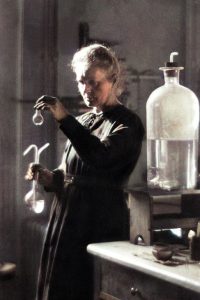
Marie Curie has been dubbed the “most iconic female scientist.” She did a lot of her important work in a small shed, spending a long time exposed to radiation as she studied.
But all that effort paid off when she made discoveries and got her Ph.D. for her research on “Radioactive Substances” in 1903.
During her career and time working in the shed, Curie found Radium, Polonium, and radioactivity. She even came up with the term “radioactive.” Curie won Nobel Prizes in both Physics (1903) and Chemistry (1911).
At first, she wasn’t supposed to get her first Nobel Prize. Her husband was going to get it, but he insisted that she deserved credit because the studies were her ideas, explained Sierra.
In World War I, Curie also invented mobile X-ray machines and trained women to use them to help injured soldiers.
Curie’s legacy goes beyond just her discoveries. It’s also about her dedication to using science to make life better for people.
She showed how much one determined person can change the world.
5. Ada Lovelace was the first computer programmer
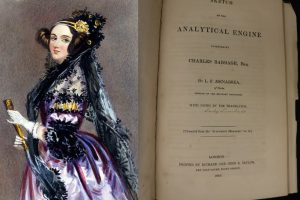
Ada Lovelace is best known for her work with Charles Babbage on his Analytical Engine, which was one of the first versions of today’s computers.
She met Babbage through her tutor and pal, Mary Somerville. Babbage showed her his early version of the difference machine, a mechanical calculator, which got her really interested in computing.
In 1842, Ada translated an Italian mathematician’s French notes about a lecture Babbage gave on his new Analytical Machine. She didn’t just translate it; she also added a bunch of her own ideas.
Her notes ended up being three times longer than Babbage’s original lecture. In those notes, Ada talked about how to use the machine to solve tough math problems, basically creating the first computer program.
Even though the Analytical Machine never got made, experts today think Ada’s program would’ve probably worked.
Apart from creating the first computer program, Ada also thought about how computers could be used in different ways beyond math.
In some of her writings, she talked about how things like music could be connected to math and explained with computers.
She thought that computers could understand lots of different languages and express ideas in many ways, which was way ahead of what most people thought about at the time.
In 1980, the US Department of Defense named their special computer programming language Ada, in recognition of her impact on the field.

